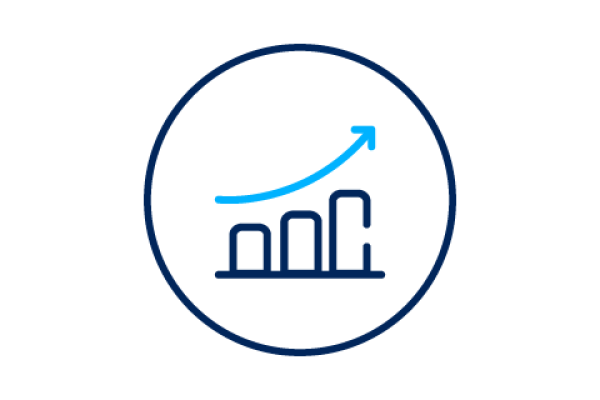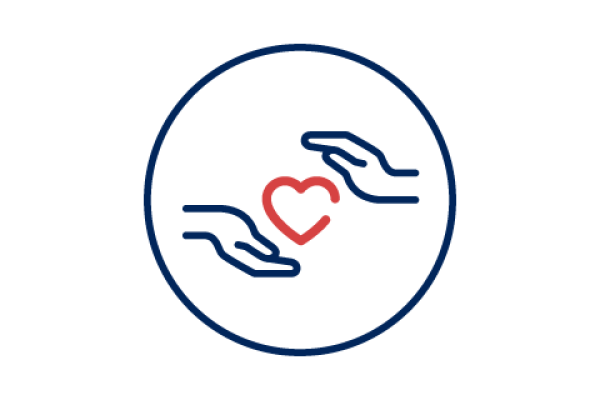Ensuring the EU is prepared for future challenges and opportunities
The centrepiece of NextGenerationEU is the Recovery and Resilience Facility (RRF) - an instrument that provides grants and loans to support reforms and investments in the EU Member States.
Objectives and benefits
Part of a wide-ranging response, the Recovery and Resilience Facility helps
- mitigate the pandemic’s economic and social impact
- make sure Member States are more resilient, more sustainable and better prepared for the challenges and opportunities of the green and digital transitions
- achieve the EU target of climate neutrality by 2050
- set Europe on a path of digital transition
- create jobs and spur growth.

Our plan is worth €723 billion. It's the largest recovery project in Europe since the Marshall Plan. It's the recovery Europe needs now and for the future
The Facility provides funds for Member States to invest (2022 prices)
* With the amended RRF Regulation, additional grants under the Emissions Trading System (ETS) and Brexit Adjustment Reserve (BAR) have been made available to Member States. Therefore, the EUR 357 billion in grants is now split in EUR 338 billion of original RRF grants, EUR 17.3 billion in ETS grants and EUR 1.6 billion in BAR grants. Furthermore, Member States could request loan support until August 2023. Of the total available envelope of EUR 385 billion, close to EUR 291 billion has been committed by end 2023. These two changes (more grants available through ETS and BAR and less loans requested than the total available envelope) result in a total RRF envelope of EUR 648 billion by end 2023. The previously mentioned amount of EUR 723 billion represented the maximum amount of RRF grants (EUR 338 billion) and RRF loans (EUR 385 billion) according to the RRF Regulation.

focusing on green technologies and capacities - sustainable mobility, energy efficiency and renewables, climate change adaptation; circular economy; and biodiversity

improving access to and the quality of general, vocational, and higher education; focusing on digital education, early childhood education and care; supporting youth employment

promoting entrepreneurship, competitiveness, industrialisation; improving the business environment; fostering research, development and innovation, supporting small- and medium-sized businesses

promoting the roll-out of very high capacity networks, the digitalisation of public services, government processes, and businesses, in particular SMEs; developing basic and advanced digital skills; supporting digital-related R&D and the deployment of advanced technologies

improving social and territorial infrastructure and services, including social protection and welfare systems, the inclusion of disadvantaged groups; supporting employment and skills development; creating high-quality, stable jobs

improving the resilience, accessibility and quality of health and long-term care, including measures to advance their digitalisation; increasing the effectiveness of public administration systems
How it works
Through the Facility, a temporary instrument, the Commission can raise funds - borrowing on the capital markets - to help Member States implement reforms and investments that
- are in line with the EU’s priorities
- address the challenges identified in country-specific recommendations under the European Semester framework of economic and social policy coordination.
The Facility entered into force in February 2021. It finances Member States’ reforms and investments, from the start of the pandemic in February 2020 through to the end of December 2026. Member States submit their recovery and resilience plans to the European Commission, setting out their planned reforms and investments to be implemented by end-2026, in order to receive financing up to the agreed allocation.
View each Member State's national plans, planned reforms and investments
Progress made by the halfway mark
In February 2024, three years into NextGenerationEU’s existence, the European Commission delivered a favourable mid-term evaluation of the RRF’s progress. With €225 billion in funding already disbursed and over 1,150 milestones and targets reached, EU countries are rapidly tackling long-standing challenges and effectively responding to new ones.
A palpable driver of economic recovery and structural reform, the RRF has also helped countries make tangible steps towards the green transition, with many well exceeding the 37% minimum requirements on climate-related objectives through their ambitious national plans.
By the end of 2023, some revisions were introduced and an added €150 billion in funding allocated to help countries pursue their goals and maximise their impact in a context of ongoing conflict at Europe’s border, high inflation, supply chain disruption, and accrued natural disaster risks, among others.
For examples of how the RRF and NextGenerationEU are setting the blueprint for a greener, stronger and more sustainable future, take a look at the European Commission’s 27 Country Snapshots and discover how projects are taking shape on the ground.

